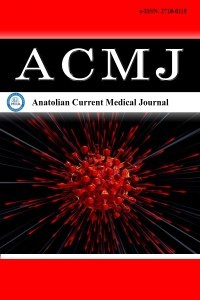1.
Lang GE. Diabetic macular edema. Ophthalmologica 2012; 227:21-9.
2.
Bhagat N, Grigorian RA, Tutela A, Zarbin MA. Diabetic macularedema: pathogenesis and treatment. Surv Ophthalmol 2009; 54:1-32.
3.
Murakami T, Yoshimura N. Structural changes in individualretinal layers in diabetic macular edema. J Diabetes Res 2013;2013: 920713.
4.
Nicoara SD. Spectral domain optical coherence tomography inthe diagnosis and monitoring of diabetic macular edema. In:OCT-Applications in Ophthalmology: IntechOpen; 2018.
5.
Wu PC, Chen YJ, Chen CH, et al. Assessment of macular retinalthickness and volume in normal eyes and highly myopic eyes withthird-generation optical coherence tomography. Eye 2008; 22: 551-5.
6.
Yeung L, Sun CC, Ku WC, et al. Associations between chronicglycosylated haemoglobin (HbA1c) level and macular volumein diabetes patients without macular oedema. Acta ophthalmol2010; 88: 753-8.
7.
Browning DJ, Glassman AR, Aiello LP, et al. Optical coherencetomography measurements and analysis methods in opticalcoherence tomography studies of diabetic macular edema.Ophthalmology 2008; 115: 1366-71, 71 e1.
8.
Dhoot DS. Incidence of new diabetic macular edema in felloweyes of patients in the VISTA and VIVID studies. InvestigOphthalmol Vis Sci 2020; 61: 278-278.
9.
Bakri SJ, Malhotra M, Stoilov I. Course of diabetic retinopathyin untreated fellow eyes in RIDE and RISE: a post hoc analysis.Ophthalmic Surg Lasers Imaging Retina 2022; 53: 202-7.
10.
Group ETDRSR. Fundus photographic risk factors forprogression of diabetic retinopathy: ETDRS report number 12.Ophthalmology 1991; 98: 823-33.
11.
Gregori NZ, Feuer W, Rosenfeld PJ. Novel method for analyzingsnellen visual acuity measurements. Retina. 2010; 30: 1046-50.
12.
Wells JA, Glassman AR, Ayala AR, et al. Aflibercept, bevacizumab,or ranibizumab for diabetic macular edema. N Engl J Med. 2015;372: 1193-203.
13.
Lai TT, Chen TC, Yang CH, Yang CM, Ho TC, Hsieh YT. Treat-and-extend vs. Pro Re nata regimen of ranibizumab for diabeticmacular edema-a two-year matched comparative study. FrontMed (Lausanne) 2021; 8: 781421.
14.
Group ETDRSR. Early Treatment Diabetic Retinopathy Studydesign and baseline patient characteristics: ETDRS reportnumber 7. Ophthalmology 1991; 98: 741-56.
15.
Itoh Y, Petkovsek D, Kaiser PK, Singh RP, Ehlers JP. Opticalcoherence tomography features in diabetic macular edema andthe impact on anti-VEGF response. Ophthalmic Surg LasersImaging Retina 2016; 47: 908-13.
16.
Wells JA, Glassman AR, Ayala AR, et al. Aflibercept, bevacizumab,or ranibizumab for diabetic macular edema: two-year resultsfrom a comparative effectiveness randomized clinical trial.Ophthalmology 2016; 123 :1351-9.
17.
Heier JS, Bressler NM, Avery RL, et al. Comparison of aflibercept,bevacizumab, and ranibizumab for treatment of diabeticmacular edema: extrapolation of data to clinical practice. JAMAOphthalmol 2016; 134: 95-9.
18.
Csaky KG, Richman EA, Ferris FL, 3rd. Report from the NEI/FDAOphthalmic Clinical Trial Design and Endpoints Symposium.Invest Ophthalmol Vis Sci 2008; 49: 479-89.
19.
Panozzo G, Parolini B, Gusson E, et al. Diabetic macular edema:an OCT-based classification. Semin Ophthalmol 2004; 19: 13-20.
20.
Lukic M, Williams G, Shalchi Z, et al. Intravitreal afliberceptfor diabetic macular oedema: Moorfields’ real-world 12-monthvisual acuity and anatomical outcomes. Eur J Ophthalmol 2020;30: 557-62.
21.
Korobelnik JF, Daien V, Faure C, et al. Real-world outcomesfollowing 12 months of intravitreal aflibercept monotherapy inpatients with diabetic macular edema in France: results from theAPOLLON study. Graefes Arch Clin Exp Ophthalmol 2020; 258:521-8.
22.
Wykoff CC, Hariprasad SM. DRCR Protocol-T: Reconciling1- and 2-Year Data for Managing Diabetic Macular Edema.Ophthalmic Surg Lasers Imaging Retina 2016; 47: 308-12.
23.
Nguyen QD, Tatlipinar S, Shah SM, et al. Vascular endothelialgrowth factor is a critical stimulus for diabetic macular edema.Am J Ophthalmol 2006; 142: 961-9.
24.
Dong N, Xu B, Chu L, Tang X. Study of 27 aqueous humorcytokines in type 2 diabetic patients with or without macularedema. PloS one 2015; 10: e0125329.
25.
Hillier RJ, Ojaimi E, Wong DT, et al. Aqueous Humor CytokineLevels and Anatomic Response to Intravitreal Ranibizumab inDiabetic Macular Edema. JAMA Ophthalmol 2018; 136: 382-8.
26.
Figueras-Roca M, Sala-Puigdollers A, Zarranz-Ventura J, et al.Anatomic response to intravitreal dexamethasone implant andbaseline aqueous humor cytokine levels in diabetic macularedema. Invest Ophthalmol Vis Sci 2019; 60: 1336-43.
27.
Chatziralli I, Kazantzis D, Theodossiadis G, Theodossiadis P,Sergentanis TN. Retinal layers changes in patients with diabeticmacular edema treated with intravitreal anti-VEGF agents: long-term outcomes of a spectral-domain OCT study. Ophthalmic Res2021; 64: 230-6.
28.
Heier JS, Korobelnik JF, Brown DM, et al. Intravitreal Afliberceptfor Diabetic Macular Edema: 148-Week Results from the VISTAand VIVID Studies. Ophthalmology 2016; 123: 2376-85.

